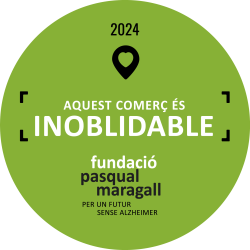
In the Catalan Pyrenees of Spain and is characterized by its high mountain landscapes, glaciers, lakes and rivers.
Within the park are several mountain towns and villages, some of them with more than 1,000 years of history, which offer a glimpse of the region’s traditional rural life and cultural heritage.
In addition, from our campsite near the Aigües Tortes Park you will have access to the most popular crossing of the area, the well-known “Carros de Fuego” which is the circular route that passes through all the shelters of the Park, this route can vary between 1 and several days and to be able to sleep in the shelters and stamp the official certificate is necessary to make a reservation in advance..
There are many things to see here, so in this article I am going to show you some of the things you can’t miss while visiting this park.
Speaking of the flora, there is a diverse variety of trees, the most common being Scots pine, black pine and spruce. Another type of plants in the park, more specifically in the areas where there is more grass, you will see birches and beeches scattered throughout the park.
The fauna of the area is composed mostly of mountain animals, the most common being the chamois (animal belonging to the Caprinae subfamily). Other animals found in the park are the Bearded Vulture (vulture belonging to the Accipitridae family), the Capercaillie (species of galliform bird belonging to the Phasianidae family), the Golden Eagle (bird of prey belonging to the Accipitridae family), the Partridge (a species of galliform bird of the family Phasianidae), the Trout (fish of the family Salmoninae), the Iberian Desman (a mammal of the family Talpidae), and the Otter (a carnivorous mammal of the family Mustelidae). Most of these animals are endangered, especially the otter, which is the park’s flagship animal.
When talking about the villages that are close to the park, I would have to mention the Vall de Boí, one of the most important spots in Catalonia because of the Romanesque churches found there, which are a World Heritage Site. It is important to keep this in mind, as the villages that make up the Vall de Boí are very close to the park.
Some of the villages in the Vall de Boí that are close to the park are Taüll, Erill la Vall, Boí, Durro, Barruera, among others. Other villages that are not located there, but are close to the park are Espot, Llessui and Llavorsí, among others. All the villages have a very marked medieval architecture, since the buildings, especially the houses and churches, were erected during the Middle Ages.
There are a lot of routes that will take you to the park, but here I will show you the best ones in terms of enriching your experience. Some routes are more complicated than others, so you will have to choose well the route you are going to take, or the one you are going to take in case you bring company.
The tour lasts 1 hour and 45 minutes. It is a tour along the banks of the San Nicolás River, through well-preserved and marked trails, making this route easy to walk. I recommend that you take a small group if you decide to take this route.
The itinerary of this route takes about 2 and a half hours to complete, through an old forest track, and having a not so steep slope, it is a pleasant walk that anyone can handle.
This tour lasts between 4 to 5 hours, being one of the longest routes known. In this tour you will be able to appreciate the lakes and ponds of the park, besides being able to observe the flora and fauna of the park. Due to the duration, the difficulty of this route is higher.
This route takes 2 hours and 15 minutes to complete, where you will see the Besiberri Massif from the Estany Negre. This route is well signposted along the entire route, making the journey easier.
It takes 2 hours and 50 minutes to traverse this route with steep slopes, full of nature and great views. Due to the slopes I mentioned before, the difficulty of this route is higher than most of the routes already mentioned. I recommend that, if you go in a group, make it a small one, and I advise you to bring coats, water and food.
El itinerario de esta ruta toma unas 3 horas para terminar este recorrido, pasando por la GR 11 y por una cabaña de pastores. La longitud de esta ruta la hace más difícil para personas que no caminan a menudo.
Esta ruta toma 1 hora y 45 minutos en completarse, siendo uno de los más cortos junto con la ruta de la Nutria. En este recorrido, podrás ver los hayedos, además del perfil occidental del parque. Debido a fuertes desniveles en el recorrido, la dificultad es más alta.
Este sendero toma 3 horas y treinta minutos si tomamos la ruta corta, ya que la larga toma unas 7 u 8 horas. En este recorrido verás los siete lagos más importantes del parque. La dificultad de esta ruta es mayor por lo larga que es.
Esta es sin duda, la “ruta” más difícil de todas, ya que consta en subir hasta la cima de la montaña más alta, el Besiberri Norte. Este recorrido toma unas 8 horas y media para completarse. La dificultad aquí es muy alta, ya que el desnivel y la longitud es mucha, además involucra usar cuerdas en algunos tramos.
Este parque es de los pocos en Europa que ofrecen una experiencia tan completa y vibrante, y no me queda otra cosa que decir, mas que pedirte que vivas esta travesía por tu propia cuenta, y si ese es el caso, espero que este articulo te haya motivado a que visites este maravilloso parque.
Disfruta esta temporada en nuestros alojamientos en Vall de Boí





Address: C / Riu 3 Barruera 25527 – Vall de Boi
Phone: 973694086 / 644932088
Email: info@campingboneta.com
